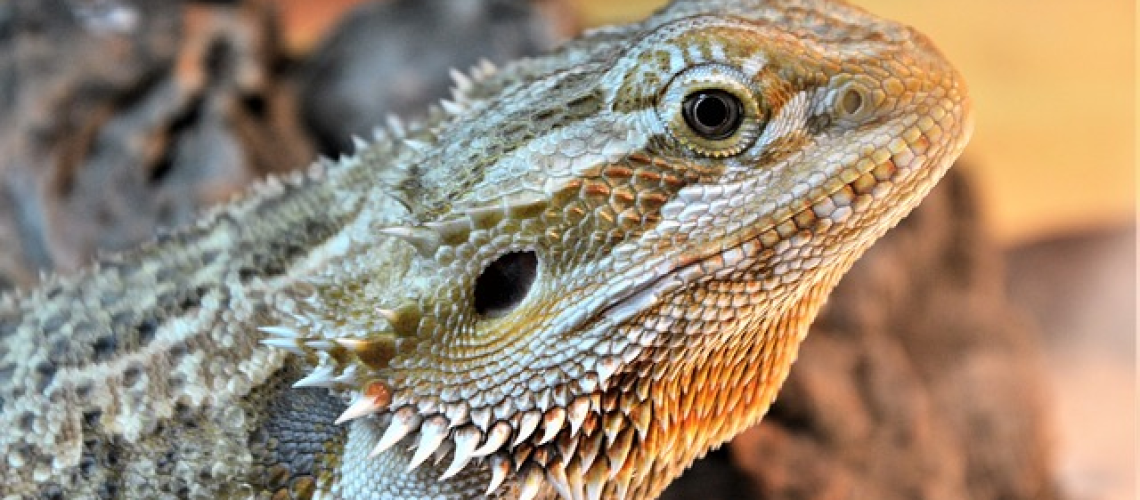Do you have a bearded dragon as a pet?
While they may not be as vocal as other animals, there are ways to get them to recognize their name.
In this article, we’ll discuss how to recognize your bearded dragon and the various methods of training them to respond when called.
You’ll also learn why some bearded dragons don’t always respond and the benefits of teaching them to recognize their name.
Get ready for an informative journey into understanding your pet!
Key Takeaways
- Training bearded dragons to respond to their name involves positive reinforcement strategies.
- Creating a bond through activities like playing and cuddling is important in training.
- Consistency is key for bearded dragons to learn that responding to their name is rewarded.
- Understanding different types of responses and interpreting them correctly is crucial in training.
Recognizing Bearded Dragons
You can recognize your bearded dragon when you call its name! Train your pet to respond to their name by using positive reinforcement strategies.
Create a bond with them through activities such as playing and cuddling. With consistency, they will learn that responding to their name is rewarded with attention and love.
Different health effects may affect how easily your beardie responds, so make sure they’re healthy before starting training.
With proper care and lots of patience, your furry friend will soon come when called!
Training Methods for Responding to Name
Training bearded dragons to recognize and respond to their names can be tricky, but it’s possible.
Engaging with dragons by calling their name in a pleasant tone and rewarding them for responding is key.
Establishing a consistent routine will help encourage responses over time.
Use treats or toys as rewards to motivate your dragon when they do respond correctly.
Patience is essential; don’t give up if you don’t get immediate results!
With the right approach, you can have a friendly dragon who responds to its name in no time.
Understanding Different Types of Responses
Knowing how to interpret different types of responses from your dragon is key for successful training. For many, this means understanding vocal recognition and naming conventions.
Your pet may recognize its name when called, respond with a head bobble or body movement or simply ignore you. It could also be that the dragon is too scared to respond at all.
To get the best response, keep calm and reward good behavior with treats!
Reasons for Not Responding to Name
There could be a number of reasons why a dragon won’t respond to its name, such as fear or confusion. Lack of bonding strategies and environmental stimulation might also be to blame.
Dragons need proper socialization and mental stimulation in order to learn their name and recognize it when spoken. If they’ve had little interaction with humans, they may not understand what’s being said or have the confidence to answer.
Creating a bond with your dragon through regular handling and providing stimulating activities are key for successful communication.
Benefits of Teaching a Bearded Dragon to Respond to Their Name
By teaching your dragon to recognize and respond to its name, you can foster a deeper bond between you and your pet.
Socializing benefits include increased trust in humans, better understanding of commands, and more positive interactions.
Health advantages include improved mental stimulation, lower stress levels, and reduced risk for negative behaviors.
Furthermore, using its name can aid in proper training and create an overall healthy environment.
Frequently Asked Questions
How Long Does It Take to Train a Bearded Dragon to Recognize Its Name?
Training a bearded dragon to recognize its name can take time and patience. With voice recognition and social bonding, it may take several weeks for them to associate their name with you. To speed up the process, reward your pet when they do something right. Be consistent in your approach and you’ll soon have a dragon that responds to its name.
What Is the Best Way to Introduce a Bearded Dragon to Its Name?
Introduce your bearded dragon to its name by teaching it using positive reinforcement techniques. Create a comfortable environment with plenty of rewards and stimuli that can help the dragon learn their name quickly. Use environmental factors to motivate them, like offering food or treats when they recognize their name.
Is It Possible to Teach an Older Bearded Dragon to Recognize Its Name?
Yes, it is possible to teach an older bearded dragon to recognize its name. Spend time bonding and use voice recognition techniques for a successful teaching experience. Give your dragon freedom to learn at his own pace and watch him grow!
Are There Any Risks Associated With Teaching a Bearded Dragon to Respond to Its Name?
Training a bearded dragon to respond to its name can lead to overstimulation, especially if they’re vocal training. Be mindful of how much you teach and practice with your pet, as too much could be stressful.
Does the Gender of the Bearded Dragon Affect Its Ability to Learn Its Name?
Calling your bearded dragon by its name and using vocal cues can help it learn faster, regardless of gender. Name calling is an effective way to reinforce desired behaviors. Use a consistent tone and reward positive responses for the best results.
Conclusion
You can help your bearded dragon recognize and respond to its name with patience and commitment. It may take some time for your pet to understand that their name is associated with you, but the effort will be worth it.
After some training, you’ll be able to get your dragon’s attention quickly and easily – making it easier for them to learn other behaviors as well!






